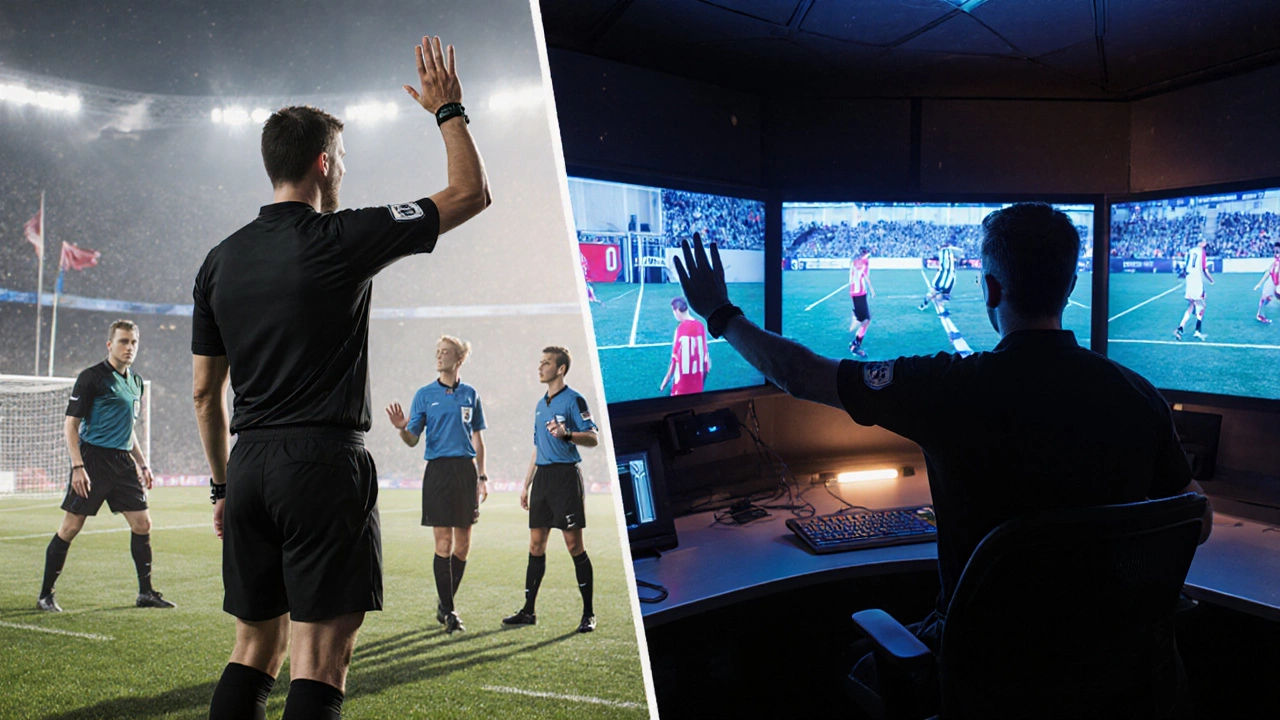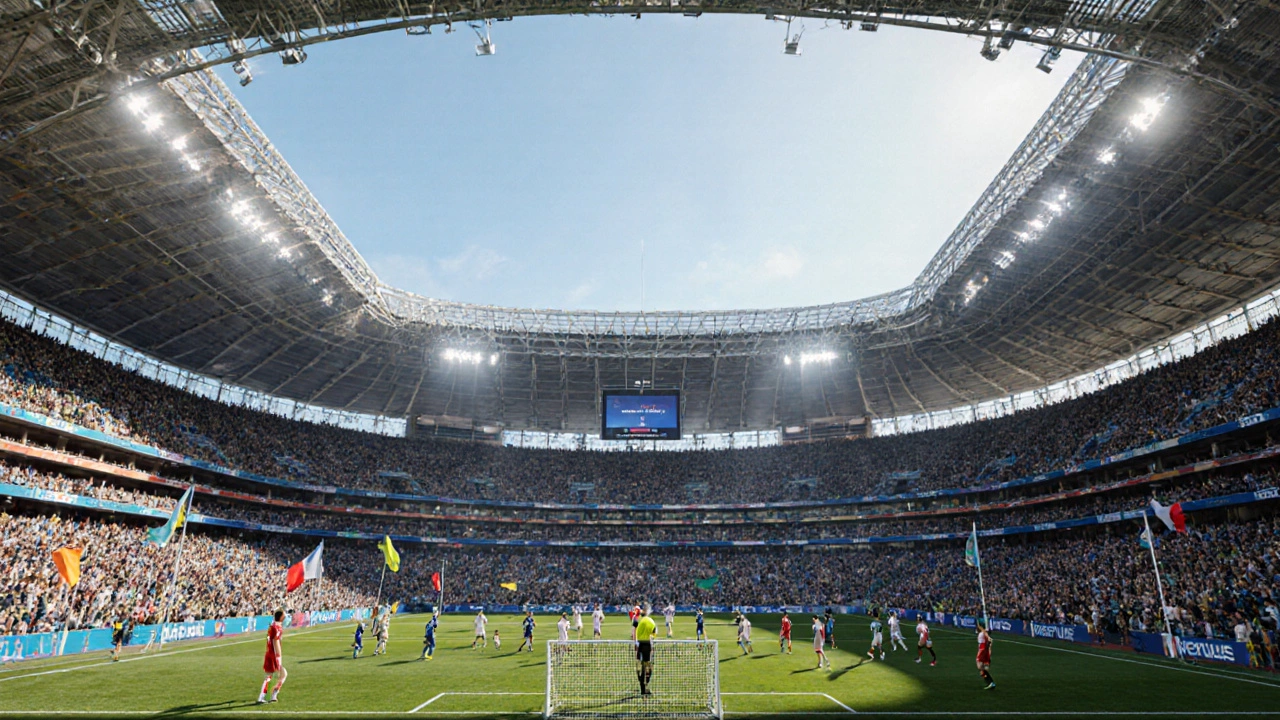FIFA Ranking Points Calculator
Calculate Your Team's Ranking Points
Based on FIFA's official ranking system explained in this article.
Estimated Points
Did you know a single FIFA match can shift a national team's world ranking for years? Whether it’s a World Cup showdown or a friendly warm‑up, every game follows a strict set of rules that shape the sport worldwide.
What Exactly Is a FIFA Match?
FIFA match is a football contest officially sanctioned by the Fédération Internationale de Football Association (FIFA). It adheres to the Laws of the Game, involves two teams of eleven players, and must be overseen by qualified officials. In practice, a FIFA match can be a World Cup fixture, a continental championship game, a qualifier, or even an approved friendly.
Who Sets the Rules?
FIFA is the global governing body that codifies the Laws of the Game, appoints referees, and manages international competitions. Its rulebook is updated annually, covering everything from the size of the ball to the technology used for decision‑making.
Core Elements Every FIFA Match Shares
- Match duration: Two 45‑minute halves plus stoppage time.
- Team composition: Eleven players each, plus up to five substitutes (three used in regular play, two extra in extra‑time periods).
- Official crew: A referee, two assistant referees, a fourth official, and, in most top‑level games, a Video Assistant Referee (VAR).
- Field standards: Pitch dimensions between 100‑110 m long and 64‑75 m wide, with clearly marked goal areas and penalty boxes.
- Ball specifications: Size 5, 410‑450 g, 68‑70 cm circumference.
Types of FIFA Matches
Not all FIFA matches are created equal. Understanding the differences helps fans grasp why some games feel more intense than others.
| Match Type | Purpose | Stakes | Typical Audience |
|---|---|---|---|
| World Cup Fixture | Determine the global champion | Highest - trophy, massive prize money, national pride | Worldwide TV audience, often >1 billion viewers |
| Continental Competition (e.g., Euro, Copa América) | Regional champion | High - qualification for World Cup, major exposure | Continental fans, strong media coverage |
| Qualifier (World Cup/Continental) | Earn a spot in a larger tournament | Medium - affects ranking, but no trophy | National supporters, local media |
| Friendly Match | Practice, experimentation, revenue | Low - no points for ranking unless officially recognized | Fans of both teams, often used for marketing |

Officiating: The Referee and VAR
The referee (referee). is the on‑field authority who enforces the Laws, manages player behavior, and makes the final call on goals. Below the referee, two assistant referees monitor offside lines, while the fourth official handles administrative duties.
Since the 2018 World Cup, the Video Assistant Referee (VAR) has become integral. VAR reviews four types of decisions: goals, penalties, direct red cards, and mistaken identity. While it adds precision, critics argue it can interrupt flow and affect fan experience.
Key Rules That Define a FIFA Match
- Offside Rule: A player is offside if, at the moment the ball is played, they are nearer to the opponent’s goal line than both the ball and the second‑last defender, unless they are in their own half. The rule aims to prevent “goal‑hanging”.
- Fouls and Misconduct: Direct free kicks are awarded for actions like tripping or handball. A red card means immediate ejection; a yellow card is a caution. Two yellows equal a red.
- Penalty Kicks: Awarded for fouls inside the penalty area. The kicker faces only the goalkeeper from the spot 11 m away.
- Extra Time & Penalty Shoot‑outs: In knockout stages, a tied game after 90 minutes proceeds to two 15‑minute halves. If still level, a shoot‑out decides the winner.
- Substitutions: Teams may make three substitutions in regular time. If extra time is played, two additional changes are allowed.
How FIFA Matches Influence Rankings
FIFA maintains the world ranking system, where each match earns points based on opponent strength, match importance, and regional weighting. A win in a World Cup final can grant as many as 70 points, while a friendly victory might add only 5‑10 points. Consistent performance in qualifiers and continental events keeps a nation high in the rankings, affecting seedings in future draws.
Common Misconceptions About FIFA Matches
- All FIFA games are high‑stakes: Friendly matches are often experimental, letting coaches test tactics without the pressure of points.
- VAR eliminates all errors: While VAR reduces clear mistakes, it cannot rule out subjective judgments, such as the severity of a foul.
- Only the final score matters: Goal difference, disciplinary records, and even the minute a goal is scored can affect tournament tie‑breakers.
Quick Takeaways
- A FIFA match follows the globally recognized Laws of the Game and is overseen by a referee plus VAR in major competitions.
- Match types range from high‑profile World Cup fixtures to low‑stakes friendlies, each with different stakes.
- Key rules like offside, fouls, and penalties shape how the game flows.
- Results feed into FIFA’s ranking system, influencing future tournament seedings.
- Understanding the officiating crew and technology (VAR) helps fans interpret controversial calls.
Frequently Asked Questions
What makes a match a “FIFA‑sanctioned” game?
A match is FIFA‑sanctioned when it follows the Laws of the Game, is organized under a FIFA‑affiliated confederation, and uses appointed referees approved by FIFA. This includes World Cup games, continental championships, qualifiers, and officially recognized friendlies.
How many substitutions are allowed in a FIFA match?
Teams may make three substitutions during regular time. In knockout matches that go to extra time, two additional changes are permitted, bringing the total to five.
What is the role of VAR?
VAR assists the on‑field referee by reviewing four specific incidents: goals, penalty decisions, direct red cards, and cases of mistaken identity. The referee can accept or reject the VAR recommendation after viewing the video footage.
Do friendly matches affect FIFA rankings?
Only friendlies that are officially recognized by FIFA count toward the rankings, and they carry a much lower weight than competitive fixtures. A win might add only a few points, whereas a qualifier victory adds considerably more.
Why is the offside rule considered one of the toughest to apply?
Offside depends on the precise moment the ball is played, the positions of multiple defenders, and the players’ movement. Assistant referees must make split‑second judgments, and VAR can only intervene if a clear error is evident.
